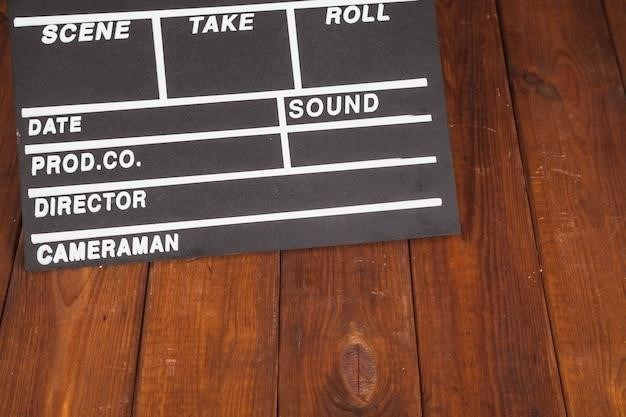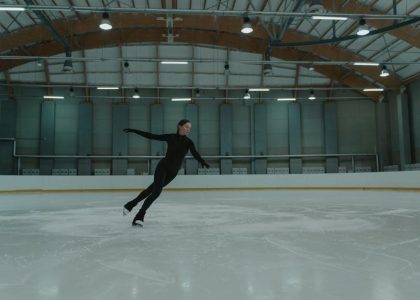The Film Experience⁚ 6th Edition Overview
The sixth edition of “The Film Experience” offers a comprehensive introduction to film studies, encompassing technology, history, and analysis of genres and techniques․ It’s available in print and digital formats, enhancing learning with updated content․
Authors and Publisher
The esteemed authors of The Film Experience, 6th Edition are Timothy Corrigan and Patricia White, renowned figures in the field of film studies․ Their extensive knowledge and experience shine through in this comprehensive textbook, offering students a deep dive into the art, language, industry, and cultural impact of cinema․ The publisher of this widely-used academic resource is Bedford/St․ Martins, a respected imprint of Macmillan Learning, known for its high-quality educational materials․ This collaboration between accomplished authors and a reputable publisher ensures the book’s authority and accessibility for students and film enthusiasts alike․ The result is a text that balances scholarly rigor with engaging presentation, making it an invaluable tool for those embarking on the journey of film study․
ISBNs and Formats
The Film Experience, 6th Edition is available in a variety of formats to cater to diverse learning styles and preferences․ For those who prefer the traditional feel of a physical book, print versions are available with ISBNs 9781319208189 and 1319208185․ The digital realm is also well-represented, with eTextbook options offering convenience and accessibility․ These digital versions come with their own set of ISBNs⁚ 9781319324216 and 1319324215․ This dual format approach ensures that students can choose the medium that best suits their needs, whether they prefer the tactile experience of a printed textbook or the portability and searchability of a digital version․ The availability of both print and digital formats underscores the publisher’s commitment to providing students with flexible and accessible learning resources․ Regardless of the chosen format, students gain access to the same comprehensive and engaging content․
Key Features of the 6th Edition
The sixth edition boasts significant enhancements, notably an expanded coverage of animation within its exploration of film technology․ A new “Technology in Action” feature provides historical context to the evolution of film technology, enriching the understanding of cinematic advancements throughout history․ This edition also integrates LaunchPad, a robust online courseware platform, offering supplementary learning materials and interactive exercises․ The text’s comprehensive approach remains central, offering a thorough introduction to film’s artistic, linguistic, industrial, cultural, and experiential aspects․ Furthermore, it maintains its strong emphasis on critical analysis, equipping students with the tools to engage deeply with films, both classic and contemporary․ The integration of new digital tools enhances the learning experience, making it more interactive and engaging for students․
Content and Coverage
This textbook provides a thorough introduction to film studies, covering film technology, history, genre analysis, and critical viewing techniques, using numerous examples․
Comprehensive Introduction to Film Studies
The 6th edition of “The Film Experience” delivers a robust and thorough grounding in the multifaceted world of film studies․ It goes beyond simply outlining film history; it delves into the art, language, industry, culture, and the very experience of watching movies․ This edition expertly blends formal knowledge with rich cultural contexts, ensuring students develop a well-rounded understanding of cinematic analysis․ The text equips students with the critical tools necessary to engage deeply with films, moving beyond mere plot summaries to unpack the intricate layers of meaning woven into each frame․ This comprehensive approach encourages a more nuanced and insightful appreciation of film as both an art form and a powerful cultural force, shaping our understanding of the world around us․ Through carefully chosen examples, both classic and contemporary, the book illuminates the diverse landscape of cinema, prompting critical thinking and informed discussion․ The accessible writing style and clear explanations ensure that students of all backgrounds can successfully navigate the complexities of film analysis․
Film Technology and History
This edition significantly enhances its exploration of film technology and history․ The expanded coverage of animation provides a deeper understanding of this crucial cinematic art form, tracing its evolution and diverse techniques․ A new “Technology in Action” feature stands out, contextualizing the ever-changing technological landscape of filmmaking within its historical trajectory․ Readers gain insights into how technological advancements have not only shaped the aesthetics of cinema but also its narrative possibilities and cultural impact․ The book meticulously traces the evolution of film technology, from early innovations to contemporary digital processes, highlighting key moments and pivotal figures that shaped the medium․ This historical perspective is essential for a complete grasp of film’s artistic and cultural significance, allowing readers to appreciate how technological innovations have continually redefined the boundaries of storytelling and visual expression in cinema․ The integration of historical context within technological discussions makes this section particularly valuable․
Analysis of Film Genres and Techniques
Delving into the core of cinematic expression, this section provides a robust examination of film genres and techniques․ It moves beyond simple categorization, exploring the nuanced characteristics that define each genre and how those characteristics evolve over time․ The analysis extends to the technical aspects of filmmaking, encompassing cinematography, editing, sound design, and mise-en-scène․ The text expertly connects these technical elements to the overall narrative and thematic impact, demonstrating how specific techniques contribute to a film’s unique style and meaning․ Through insightful examples from both classic and contemporary films, the book illuminates the interplay between genre conventions and artistic innovation․ Readers learn to critically analyze films by understanding how directors employ various techniques to achieve specific aesthetic and narrative effects, fostering a deeper appreciation of cinematic artistry․ The detailed exploration of genre conventions and technical elements equips readers with the skills to conduct their own insightful analyses of films․

Access and Purchase Options
Acquire the 6th edition via Macmillan Learning; choose from print, digital, or e-book formats․ Rental and purchase options are available directly from the publisher․
Digital and Print Versions
The Film Experience, 6th Edition is available in both print and digital formats, catering to diverse learning preferences and access needs․ The print version offers a tangible textbook experience, ideal for those who prefer traditional reading and note-taking methods․ The physical book allows for highlighting, underlining, and annotating directly within the text, fostering a more engaged and interactive learning process․ This tactile approach can be especially beneficial for students who find it easier to focus and retain information when interacting physically with their learning materials․
Conversely, the digital version provides unparalleled convenience and accessibility․ Students can access the textbook on various devices, including computers, tablets, and smartphones, eliminating the need to carry a heavy textbook․ This digital flexibility allows for on-the-go learning and seamless integration into students’ existing digital workflows․ Furthermore, many digital versions offer added features such as interactive exercises, multimedia content, and search functionality, enhancing the overall learning experience and making it more dynamic and engaging․ The choice between print and digital versions ultimately depends on individual learning styles and practical considerations․
E-book Platforms and Download Options
Accessing the digital edition of “The Film Experience, 6th Edition” is straightforward․ The e-book is available through various online platforms, including those offered by the publisher, Macmillan Learning, and other reputable e-book retailers․ This wide distribution ensures accessibility for students regardless of their preferred e-reading methods or device compatibility․ Users can typically download the e-book in popular formats like PDF and EPUB, enabling seamless integration with e-reading applications and devices․ The download process is generally simple, involving an online purchase and subsequent access to a download link or direct access within the chosen platform’s library․
Many platforms offer additional features beyond simple download capabilities․ These may include features like text highlighting, note-taking tools, bookmarking, and search functionalities within the text itself․ Some platforms even allow for offline reading, ensuring access to the e-book even without an internet connection․ Before purchasing, it is advisable to check the specific features and functionalities offered by each platform to ensure compatibility with personal preferences and learning styles․ This ensures the most efficient and enjoyable reading experience․
Rental and Purchase from Publisher
Macmillan Learning, the publisher of “The Film Experience, 6th Edition,” provides direct avenues for both purchasing and renting the textbook․ Purchasing grants permanent access to the digital or print version, offering flexibility for continued reference and study throughout the course and beyond․ The publisher’s website typically provides detailed information on pricing and available formats, including the option for digital downloads, print copies, or bundled packages․ Rental options provide a cost-effective alternative, particularly beneficial for students who need the textbook for a limited duration, such as a single semester․
Purchasing directly from Macmillan Learning often includes additional benefits․ These can range from access to supplementary online resources, such as LaunchPad, to potential discounts or bundled offers with other learning materials․ The publisher’s website usually provides a secure checkout process and various payment options for convenience․ Checking the publisher’s website regularly is recommended, as they often offer promotions and special pricing for students․ Contacting Macmillan Learning’s customer service can also provide clarification on specific purchasing or rental inquiries, ensuring a smooth transaction and a positive experience․

Supplementary Resources
LaunchPad, an online courseware platform, accompanies the 6th edition, offering additional learning materials to enhance the textbook’s content․
LaunchPad Online Courseware
Enhance your learning experience with LaunchPad, the comprehensive online platform designed to complement “The Film Experience, 6th Edition․” This interactive resource provides a wealth of supplementary materials, including the complete e-book, interactive exercises, and engaging multimedia content․ LaunchPad facilitates a deeper understanding of film history, technology, and analysis techniques․ It offers a dynamic learning environment, moving beyond static textbook content to provide interactive quizzes, videos, and discussion forums․ Through LaunchPad, students can actively participate in their learning journey, strengthening their grasp of key concepts and fostering a collaborative learning environment․ The platform’s intuitive design makes navigation easy, allowing students to access resources quickly and efficiently, maximizing their study time and enhancing their overall understanding of film․ This integrated approach ensures a rich and engaging learning experience, going beyond the traditional textbook format to create a truly dynamic and interactive learning environment․
Additional Learning Materials
Beyond LaunchPad, numerous resources enrich the study of film using “The Film Experience, 6th Edition․” Consider exploring supplemental websites dedicated to film history, theory, and criticism․ These sites often contain valuable articles, essays, and reviews, expanding upon concepts covered in the textbook․ Many film archives offer online access to classic and contemporary films, enabling students to view firsthand the techniques and styles discussed․ Documentaries focusing on filmmaking processes and the history of cinema can provide additional context and insight․ Furthermore, engaging in discussions with classmates and instructors through online forums and in-person meetings allows for collaborative learning and the exchange of diverse perspectives․ Remember to utilize the book’s extensive bibliography for further research into specific directors, genres, or historical periods․ Actively seeking out these supplementary materials will enhance the learning experience and deepen your understanding of the multifaceted world of cinema․





